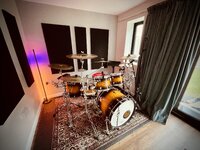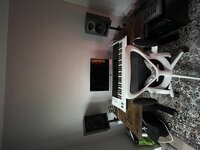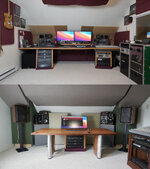Tele,
> 100hz is all but disappearing at my mix position. <
Lee is correct about having double modes near 100 Hz. But that doesn't explain your reduction at that frequency. I believe what's really happening is acoustic interference caused by reflections off the walls, floor, and ceiling are creating the dip. I'm pretty sure you have problems at other frequencies too. In fact, for any given location in the room you should be able to find a frequency that is reduced and another that is increased. And vice versa - for any given frequency you'll find places where that frequency is too loud and others where it's too soft.
The best solution is bass trapping that absorbs the entire range of low frequencies. As opposed to building or buying a trap that's custom tuned to 100 Hz. Yes, trapping that one frequency will help that one frequency, but it will not help all the other frequencies.
Since your room is so large and has such a high ceiling, I'm hesitant to recommend doing anything further until you try this simple test: Play a variety of low frequency sine waves one at a time, and walk around the room listening for places where it gets louder and softer. Play 80 Hz and walk around, then 100 Hz, and so forth up to maybe 150 Hz. If my suspicions are correct, you will find places in the room where every frequency has a skewed response.
Let us know what happens.
--Ethan




